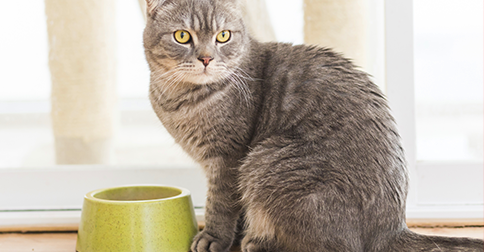
Finicky felines. Picky pussycats. Critical kitties. If you share your home with a cat, chances are you’ve been victimized by an upturned nose or cold stare after offering a new food. For years we’ve chalked this up to “cats being cats” and simply expanded our buffet selections. New science published in BMC Neuroscience proves our feline’s taste buds are more different from our own than previously believed. Now if I can only get my cat to stop staring at me.
What cats like to eat
We’ve known cats ignore sweet flavors for some time. A study published in the 2006 Journal of Nutrition concluded a cat’s palate preferred proteins, snubbed sweets, and shunned sour and bitter flavors. Avoiding acidic and astringent tastes serves to protect felidae from eating spoiled meats or gobbling a toxic morsel. Until now, we only knew cats could taste bitter foods; we didn’t know if their taste differed from humans. A group of petfood scientists set out to sample this sharp and savory subject. [Editor's note: We at Pet Health Network take no responsibility for Dr. Ward's flavorful pun.]
Why understand how cats receive and process flavor?
Understanding how and why a cat perceives flavor is very important to petfood manufacturers. Important because if you launch a new cat food that cats don’t love, you’re out of business. The petfood business is worth nearly $50 billion so mistakes aren’t cheap. From a medical standpoint, I’m interested in these matters for two main reasons:
- Uncovering new biology helps veterinarians develop better disease tests and treatments;
- More palatable foods allow us to better satisfy the appetites of dogs and cats, aiding me in the fight against pet (and human) obesity. So what did these lab scientists find?
The initial research
Before we get to their conclusions, it’s important to point out this research was not conducted on live cats. In fact, it wasn’t performed on cats at all. Rather, the clever intellects used fancy cell cultures and gene analysis instead of persnickety pussycats. Before you ask why didn’t they use real cats, remember a cat’s previous exposure to tastes would influence those results. A cat fed a more bitter diet could potentially be less sensitive to subtle sours. The cellular responses are not biased by previous food and flavor contact. And so the examiners peered into their Petri dishes.
What they found
In a nutshell, the researchers determined that cat taste receptors failed to respond to many tastes humans found really yucky or bitter. Ingredients we find repulsive such as saccharine and aloin, from the aloe plant, barely elicited a response by feline taste buds. In contrast, cats really reviled at the hint of denatonium, a bitter substance added to antifreeze and rat poison to deter accidental ingestion. Felines’ response to denatonium was so significant that adding it to additional products may prevent more unintentional poisonings formerly believed. These findings will also help us design tastier medications, support the treatment of certain behavioral conditions, and create more flavorful foods.
What's next?
This research will potentially benefit cats and humans in other ways, too. First, knowing how sensitive cats are to denatonium may lead to safer products. Second, understanding cats’ tastes offers an opportunity to create more appetizing nourishment for them. Finally, recognizing the differences between humans and pets aides us in making them more comfortable and happier. That’s my goal, to make the lives of pets and people happier. And if my cat is happier, hopefully she’ll stop staring at me.
If you have any questions or concerns, you should always visit or call your veterinarian – they are your best resource to ensure the health and well-being of your pets.
